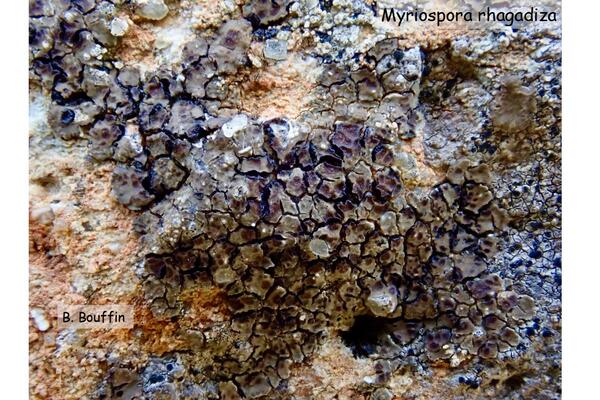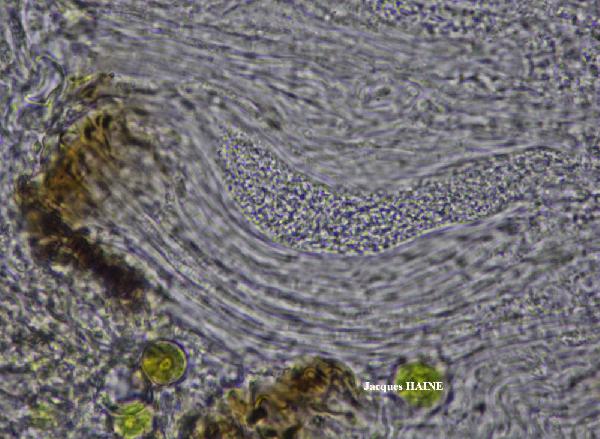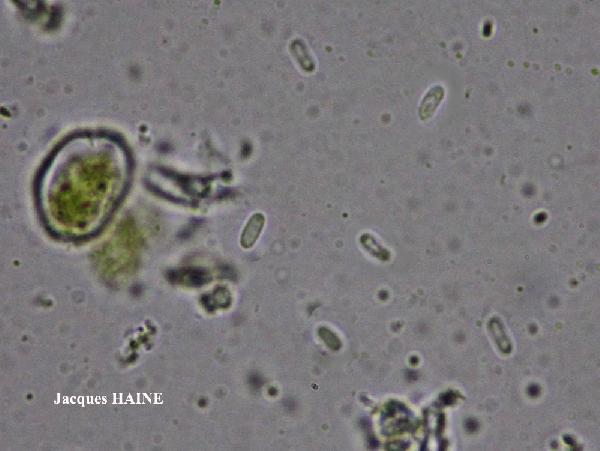Myriospora rhagadiza (Nyl.) K. Knudsen & Arcadia
in Arcadia & Knudsen, Opuscula Philolich., 11: 22, 2012. Basionym: Lecanora rhagadiza Nyl. - Flora, 64: 1881.
Synonyms: Acarospora scyphulifera Vain.; Acarospora smaragdula subsp. smaragdula var. scyphulifera (Vain.) Clauzade & Cl. Roux; Acarospora smaragdula var. rhagadiza (Nyl.) Clauzade & Cl. Roux; Silobia rhagadiza (Nyl.) M. Westb.
Distribution: S - Camp (Westberg & al. 2011).
Description: Thallus crustose, episubstratic, areolate, the areoles irregular to angular in outline, contiguous or sometimes dispersed, separated by broad cracks; fertile areoles 0.7-1.5(-2) mm wide, dirty greyish brown, dark brown or pale rust-red, dull, epruinose, usually flat, sometimes convex or with slightly upturned margins. Epicortex absent or very thin; cortex paraplectenchymatous, 15-35 μm thick, of 2-5 μm wide, isodiametric cells, the uppermost ones with red-brown to dark brown walls, without crystals; algal layer interrupted by thick anticlinal bundles of medullary hyphae; lower cortex absent. Apothecia cryptolecanorine, 0.15-0.55(-0.65) mm across, immersed, 1-4(-6) per areole, with a reddish brown to brown (reddish when wet), smooth, epruinose disc surrounded by a distinct, slightly raised, pale brown to blackish parathecial margin, the thalline margin poorly developed. Proper exciple colourless, but uppermost cells with dark brown caps; epithecium yellow-brown to dark red-brown; hymenium colourless, 110-160 μm high; paraphyses sparingly branched and anastomosing, 1-2 μm thick, the apical cells cylindrical to clavate; subhymenium 50-75 μm high, colourless to greyish or yellowish, densely inspersed with oil droplets. Asci 100-200-spored, clavate, the apical dome K/I-, c. 105 x 21 μm. Ascospores 1-celled, hyaline, ellipsoid, 2.5-3 x 1–1.5 μm. Photobiont chlorococcoid. Spot tests: cortex and medulla K-, C-, KC-, P-, UV-. Chemistry: without lichen substances. Note: optimum on basic siliceous rocks, usually not far from the coasts; a very variable, mainly western species in Europe, also reported from Mt. Vesuvius.
Growth form: Crustose
Substrata: rocks
Photobiont: green algae other than Trentepohlia
Reproductive strategy: mainly sexual
In underhangs rarely wetted by rain
Commonnes-rarity: (info)
Alpine belt: absent
Subalpine belt: absent
Oromediterranean belt: very rare
Montane belt: very rare
Submediterranean belt: absent
Padanian area: absent
Humid submediterranean belt: absent
Humid mediterranean belt: absent
Dry mediterranean belt: absent

Predictive model
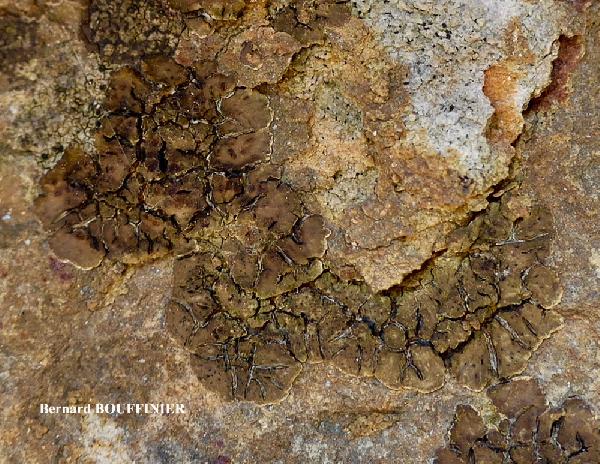
Bernard Bouffinier - Source: http://www.lichensmaritimes.org/index.php?task=fiche&lichen=1028&lang=en
France, Argol, Lomergat
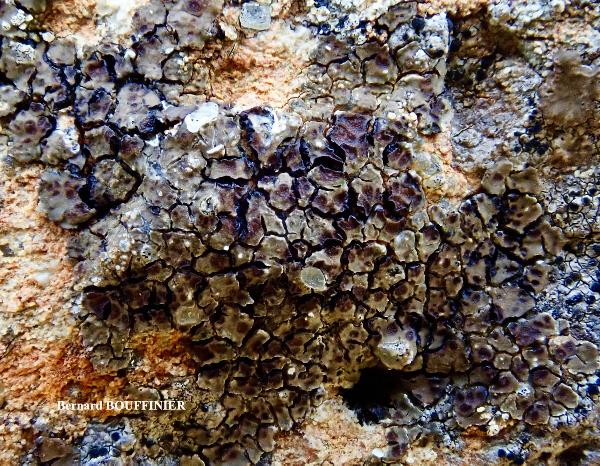
Bernard Bouffinier - Source: http://www.lichensmaritimes.org/index.php?task=fiche&lichen=1028&lang=en
France, Rostellec
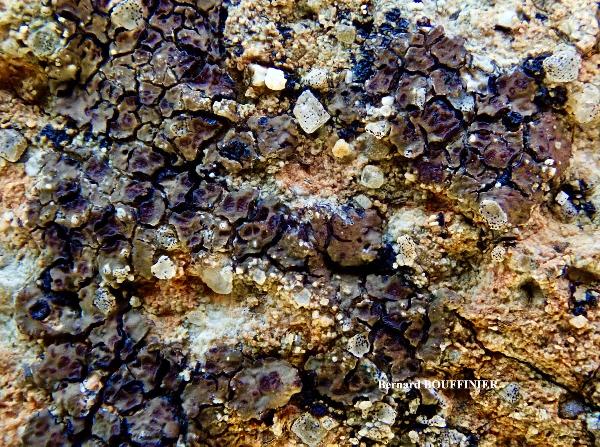
Bernard Bouffinier - Source: http://www.lichensmaritimes.org/index.php?task=fiche&lichen=1028&lang=en
France, Rostellec
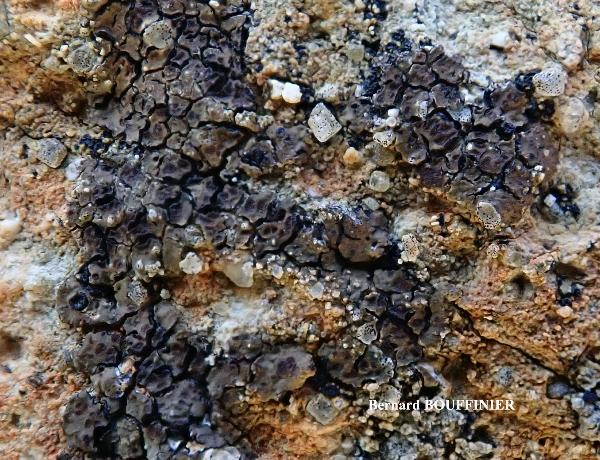
Bernard Bouffinier - Source: http://www.lichensmaritimes.org/index.php?task=fiche&lichen=1028&lang=en
France, Rostellec

Bernard Bouffinier - Source: http://www.lichensmaritimes.org/index.php?task=fiche&lichen=1028&lang=en
France, Argol, Lomergat

Bernard Bouffinier - Source: http://www.lichensmaritimes.org/index.php?task=fiche&lichen=1028&lang=en
France, Rostellec

Bernard Bouffinier - Source: http://www.lichensmaritimes.org/index.php?task=fiche&lichen=1028&lang=en
France, Rostellec
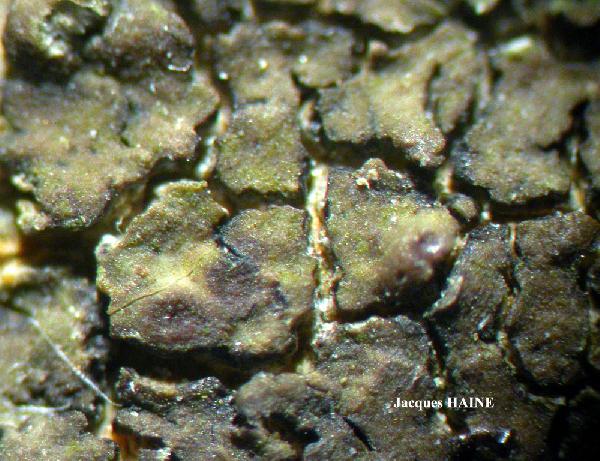
Jacques Haine - Source: http://www.lichensmaritimes.org/index.php?task=fiche&lichen=1028&lang=en
France, Argol, Lomergat

Jacques Haine - Source: http://www.lichensmaritimes.org/index.php?task=fiche&lichen=1028&lang=en
France, Argol, Lomergat
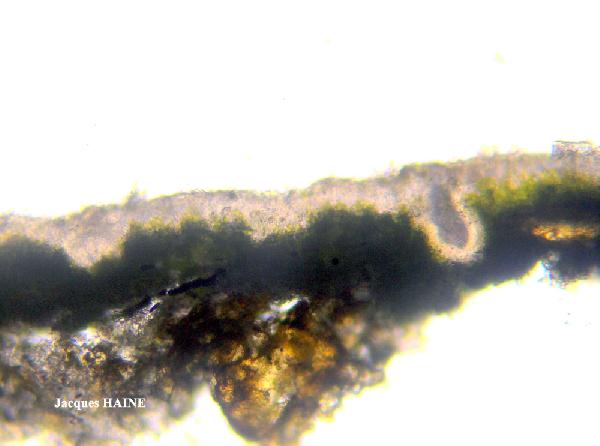
Jacques Haine - Source: http://www.lichensmaritimes.org/index.php?task=fiche&lichen=1028&lang=en
France, Argol, Lomergat
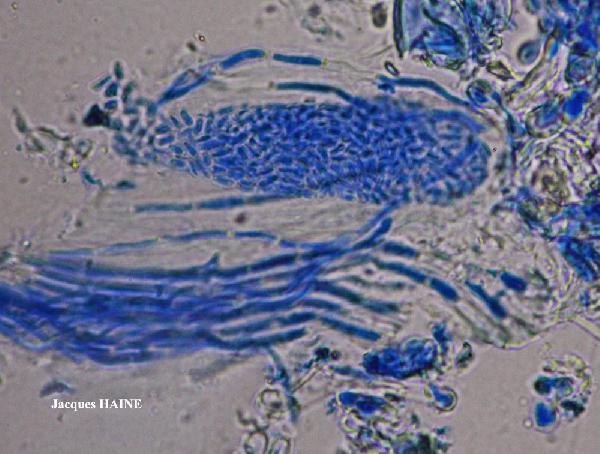
Jacques Haine - Source: http://www.lichensmaritimes.org/index.php?task=fiche&lichen=1028&lang=en
France, Argol, Lomergat
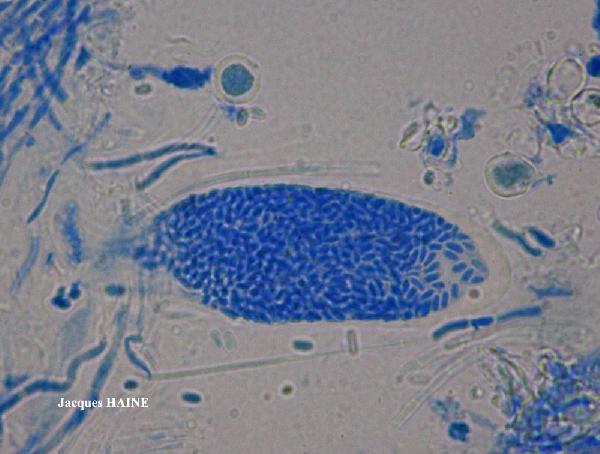
Jacques Haine - Source: http://www.lichensmaritimes.org/index.php?task=fiche&lichen=1028&lang=en
France, Argol, Lomergat
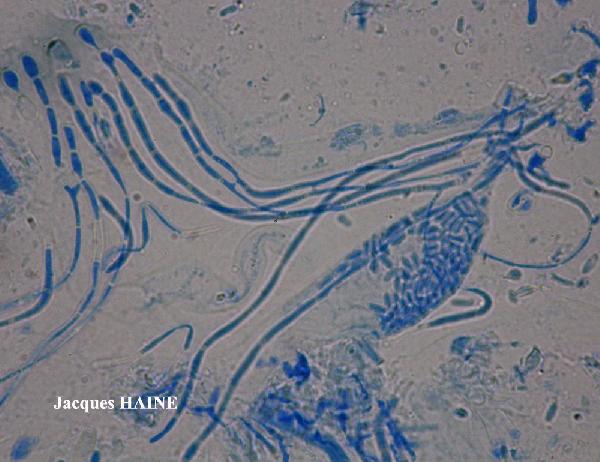
Jacques Haine - Source: http://www.lichensmaritimes.org/index.php?task=fiche&lichen=1028&lang=en
France, Argol, Lomergat
Growth form: Crustose
Substrata: rocks
Photobiont: green algae other than Trentepohlia
Reproductive strategy: mainly sexual
In underhangs rarely wetted by rain
Commonnes-rarity: (info)
Alpine belt: absent
Subalpine belt: absent
Oromediterranean belt: very rare
Montane belt: very rare
Submediterranean belt: absent
Padanian area: absent
Humid submediterranean belt: absent
Humid mediterranean belt: absent
Dry mediterranean belt: absent

Predictive model

Bernard Bouffinier - Source: http://www.lichensmaritimes.org/index.php?task=fiche&lichen=1028&lang=en
France, Argol, Lomergat

Bernard Bouffinier - Source: http://www.lichensmaritimes.org/index.php?task=fiche&lichen=1028&lang=en
France, Rostellec

Bernard Bouffinier - Source: http://www.lichensmaritimes.org/index.php?task=fiche&lichen=1028&lang=en
France, Rostellec

Bernard Bouffinier - Source: http://www.lichensmaritimes.org/index.php?task=fiche&lichen=1028&lang=en
France, Rostellec

Bernard Bouffinier - Source: http://www.lichensmaritimes.org/index.php?task=fiche&lichen=1028&lang=en
France, Argol, Lomergat

Bernard Bouffinier - Source: http://www.lichensmaritimes.org/index.php?task=fiche&lichen=1028&lang=en
France, Rostellec

Bernard Bouffinier - Source: http://www.lichensmaritimes.org/index.php?task=fiche&lichen=1028&lang=en
France, Rostellec

Jacques Haine - Source: http://www.lichensmaritimes.org/index.php?task=fiche&lichen=1028&lang=en
France, Argol, Lomergat

Jacques Haine - Source: http://www.lichensmaritimes.org/index.php?task=fiche&lichen=1028&lang=en
France, Argol, Lomergat

Jacques Haine - Source: http://www.lichensmaritimes.org/index.php?task=fiche&lichen=1028&lang=en
France, Argol, Lomergat

Jacques Haine - Source: http://www.lichensmaritimes.org/index.php?task=fiche&lichen=1028&lang=en
France, Argol, Lomergat

Jacques Haine - Source: http://www.lichensmaritimes.org/index.php?task=fiche&lichen=1028&lang=en
France, Argol, Lomergat

 INDEX FUNGORUM
INDEX FUNGORUM
 GBIF
GBIF
